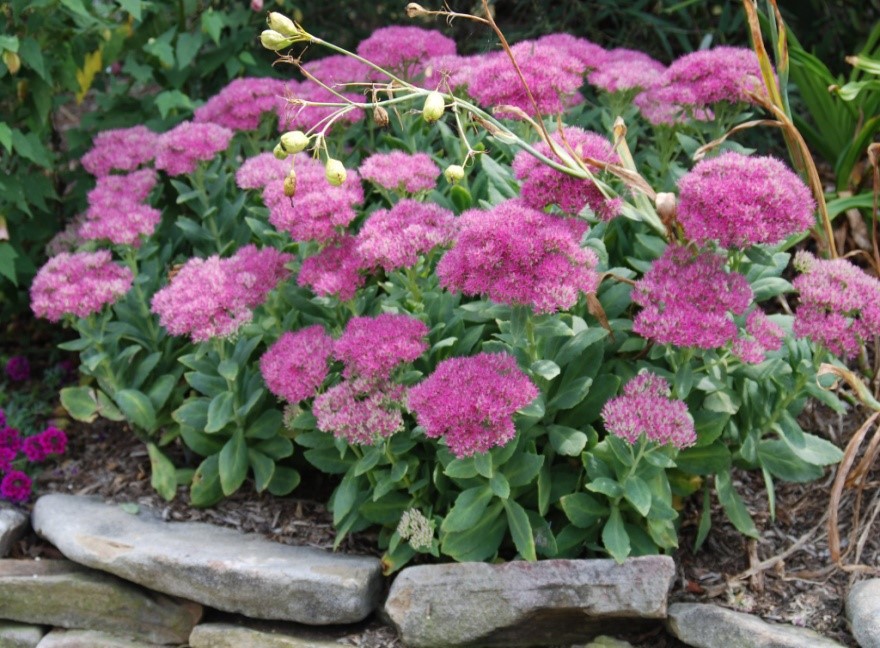Common Name: Lenten Rose, Christmas Rose, Hellebore
Latin Name: Helleborus
Likes: Hellebores will tolerate most soils, but do best in semi-shade. They won’t tolerate drying out in full sun and need a protected location from wind damage.
Fun Fact: The Hellebore's 'flowers' aren’t petals but sepals which are leaves that have grown to look like petals of a flower. Their job is to protect the actual flower, which is at the center the actual petals are those weird hollow things on the outer rim of the flower.
Why we recommend it: Very early bloomer that thrives in the cold temperatures when gardeners are impatient for spring but other flowers are still dormant. Looks great with early spring bulbs
Watch out for: Aphids

Common Name: Columbine
Latin Name: Aquilegia
Likes: Columbine plants aren’t too picky about soil as long it’s well draining and not too dry. While they enjoy full sun in most areas if it’s a hot area they would probably appreciate some mulch to keep their roots cool.
Fun Fact: its Latin name comes from ‘Aquila’ which means eagle, as the petals resemble an eagle’s claw. The common name is Columbine, which means Dove.
Why we recommend it: It blooms in a variety of colors for a long time during spring. It's absolutely gorgeous and it’s a hummingbird magnet!
Watch out for: Leaf miners

Common Name: Moss Phlox, Creeping Phlox
Latin Name: Phlox subulata
Likes: grows best in full sun & well-drained soil
Fun Fact: The name is derived from the Greek word phlox meaning flame in reference to the intense flower colors of some varieties
Why we recommend it: Creeping phlox has beautiful masses of color in the early spring. It’s hard to beat the stunning display of color in early spring. Looks incredible draped over rocks
Watch out for: Powdery Mildew, Aphids

Common Name: Thrift, Sea Thrift or Sea Pink
Latin Name: Armeria
Likes: Thrift prefers well-drained soil in full sun. The best type of soil for this plant is sandy or well-draining as soil that is too wet may cause the plant to rot.
Fun Fact: In Gaelic thrift is known as tonna chladaich, meaning 'beach wave’ I think because it grows in salty locations on cliffs in Ireland and gets hit by the waves.
Why we recommend it: it is a super cute little evergreen plant that is very easy to grow as long as it doesn’t go in moist soil. It blooms for a long time from mid spring to early summer and often re-blooms randomly in the summer. Great in a rock garden.
Watch out for: Overwatering
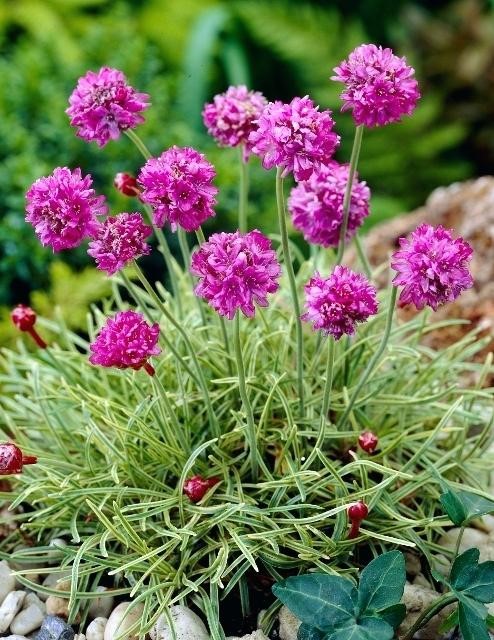
Common Name: Bleeding hearts
Latin Name: Dicentra spectabilis
Likes: well-drained soil in part shade to full shade. Will not tolerate hot afternoon sun. Best for the shaded border or woodland garden.
Fun Fact: botanists are ALWAYS changing their minds and have decided to change the name of the plant to Lamprocapnos. I’m standing firm on Dicentra. They’re only going to change their minds again.
Why we recommend it: The old-fashioned Bleeding Heart has been a garden favorite for years. It bears long stems of heart-shaped pink flowers from spring to early summer
Watch out for: People who want structure in summer months. In the heat it will go dormant and look like nothing in the garden. Because foliage goes dormant, it is best to plant this bleeding heart through a loose ground cover or among later developing perennials such as hostas and ferns which will fill in as the bleeding heart foliage begins to die back.
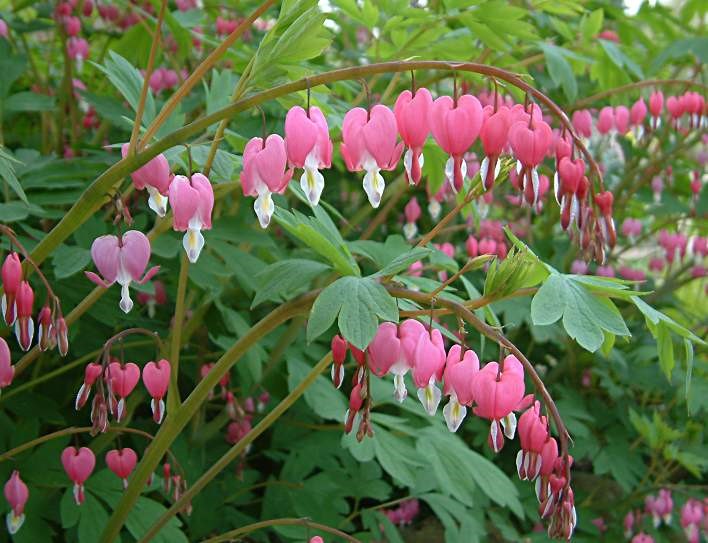
Common Name: Bedstraw, Gallium
Latin Name: Gallium oderatum
Likes: Grows best in an average to moist, well-drained soil, in partial to full shade.
Why we recommend it: long blooming and one of the most popular groundcovers for a shady area, slightly invasive if it likes the area.
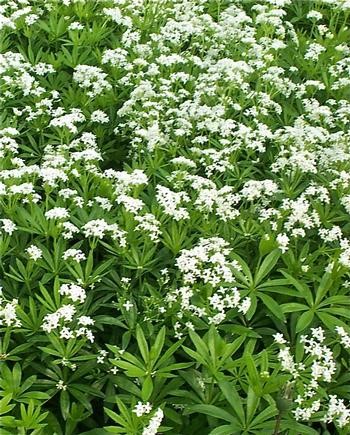
Common Name: Candytuft
Latin Name: Iberis
Likes: Grow in average but well-drained soil in full sun.
Fun Fact: Iberis represents indifference.
Why we recommend it: The low-growing habit of Iberis makes it an excellent edging plant for borders, paths or sidewalks in the spring and early summer garden. Its low maintenance and it looks especially stunning in rock gardens or cascading over ledges.
I don’t find any pests a problem
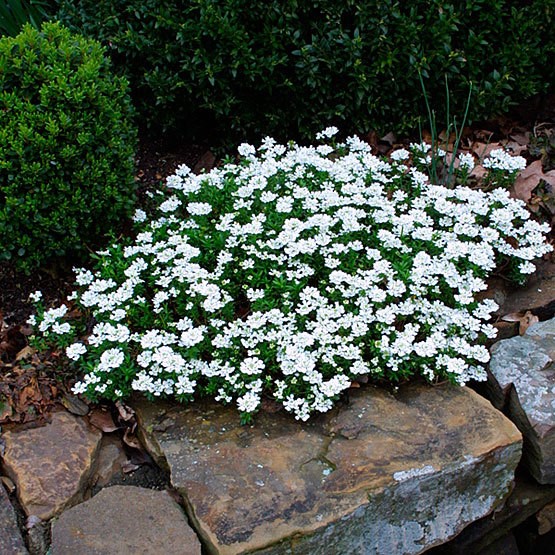
Common Name: Coral Bells
Latin Name: Heuchera
Likes: Full shade to Part Shade some of the newer varieties can take full sun
Fun Fact: This one is ‘Wild Rose’ <3
Why we recommend it: available in almost every colour imaginable it's hard to think of a place coral bells won't fit in. They're at home in woodlands, rock gardens, containers, borders and as ground covers. The leaves are evergreen, so it provides year round interest even when it’s not flowering.
Watch out for: needs to be divided every 3 years to keep it healthy and vigorous.
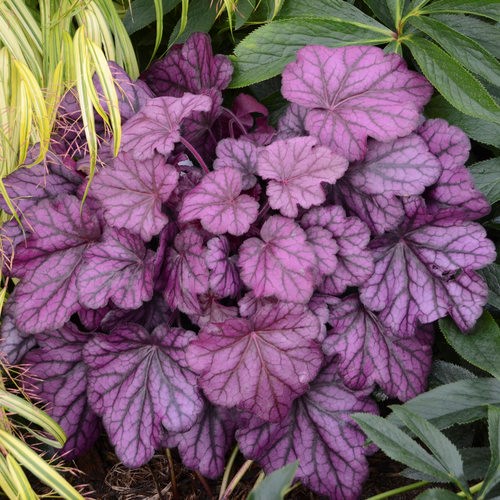
Common Name: Daylily (not to be confused with an actual Lily- whose Latin name is Lillium)
Latin Name: Hemerocallis (very rare that anyone will call it this….)
Likes: Full Sun 6+ Hours. Always better bloom, growth and disease resistance when plants get what they want!
Fun fact: The most popular Daylily is called Stella D’oro.(pictured here). The name in Italian translates to ‘Star of Gold’
Why we recommend it: Landscapers have it as a ‘go to’ perennial because it’s a no fuss plant that is very easy to grow and hard to kill
What to watch out for- Aphids. Those jerks eat almost everything.
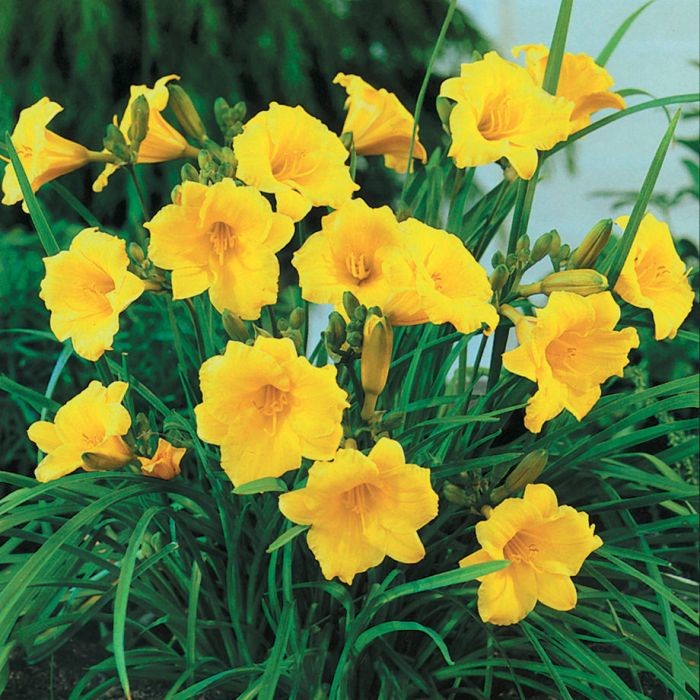
Common Name: Catmint
Latin Name: Nepeta cataria
Likes: Full Sun and well-drained soil
Fun fact: All stems in the mint family have square stems.
If you have cats they’ll want to hang out in the patch of Catmint. It gets them high so they roll around in it. So prepare to have it flattened.
Why we recommend it: bordering on invasive it is incredibly hardy and blooms for a very long time.
Pests: Cats! Aphids don’t like it though-So bonus!
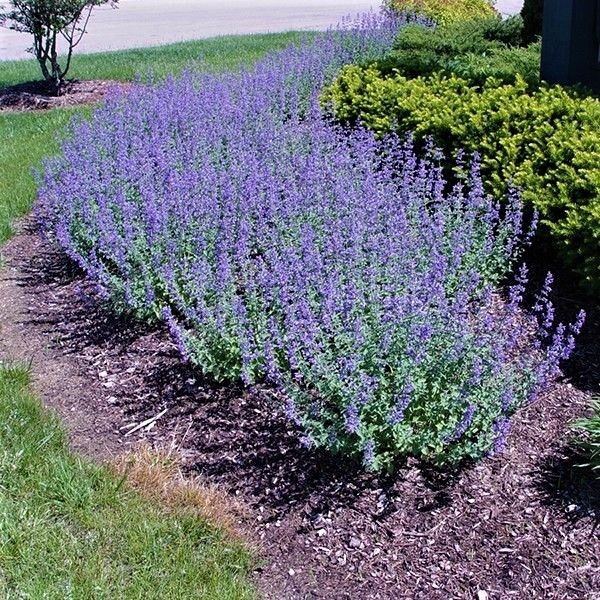
Common Name: Shasta Daisy
Latin Name: Leucanthemum
Likes: Full Sun
Fun fact: The name Leucanthemum derives from the Greek words leukos (white) and anthemon (flower)
Why we recommend it: it’s a summer favourite with its bright flowers that bloom for a long time. Not all white though-Varieties like Banana Cream offer beautiful yellow blooms
Watch out for- Mildew and Aphids
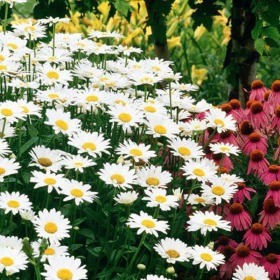
Common Name: Lavender
Latin Name: Lavandula
Likes: Full Sun
Fun fact: the name Lavender comes from the Latin verb ‘Lavare’ which means ‘to wash’
Why we recommend it: It smells amazing, it repels mosquitoes but attracts bees and butterflies, and it blooms for a very long time.
Also - cut flowers and potpourri
Watch out for: Spittle bugs, whiteflies and aphids
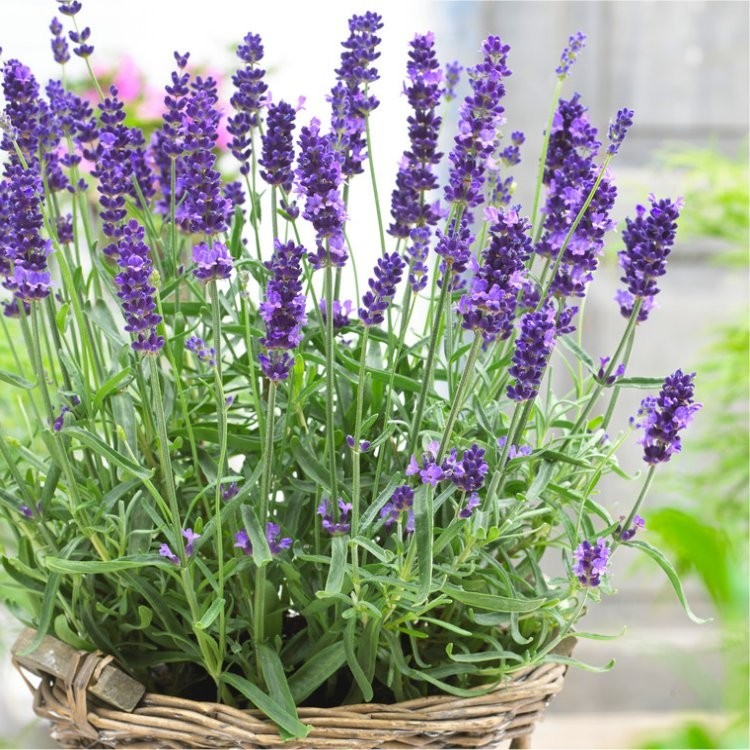
Common Name: Coneflower
Latin Name: Echinacea
Likes: Full Sun
Fun fact: The name Echinacea comes from the Greek echinos, which describes the nature of a hedgehog- referring to its bristly flower head
Why we recommend it: very long blooming, attracts pollinators, comes in a very large variety of colours heights shapes and sizes, looks amazing in mass plantings, feeds the birds in the winter if you don’t cut them down in the fall.
(I like to encourage people to leave most perennials up for this reason) also they add to winter interest and look pretty with a bit of snow on them!
Watch out for: *sigh* Aphids, Japanese Beetles, Leafhoppers and Whitefly. Also fungus/mildew if it get watered from above and if not given proper air flow. They benefit from division every few years

Common Name: Butterfly Weed, Milkweed
Latin Name: Aslcepias
Likes: Full Sun and soil requirements depend on variety.
Fun fact: Butterfly Weed is the host plant for the Monarch butterfly. The caterpillars use the leaves as a basic source of food until they transform into butterflies.
Why we recommend it: Monarchs cannot survive without milkweed; their caterpillars only eat milkweed plants (Asclepias spp.), and monarch butterflies need milkweed to lay their eggs. Milkweed comes in a variety of colours and heights my favourite being Asclepias tuberosa which is the sand tolerant Orange variety.
Watch out for: I find the Asclepias incarnata get insanely infested with Oleander Aphids in the summer and those suckers are incredibly resilient!! Luckily they don’t bother too many other plants. Because you can’t spray these plants with pesticide (it will kill any feeding caterpillar) I find a power washing attachment on the end of the hose works well- you just have to keep on it.
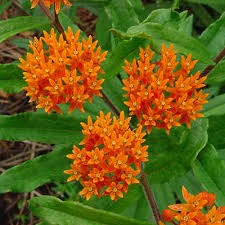
Common Name: Speedwell
Latin Name: Veronica
Likes: Full sun and well-drained soil
Fun Fact: sometimes gets a bad reputation because a few of the Veronicas are aggressive weeds! We don’t sell those ones J
Why we recommend it: is a carefree and easy-to-grow long flowering perennial with spikes of small petals in purple, blue, pink, or white. Available in many heights from short groundcover to over 100 cm.
Watch out for: powdery mildew - only water when it’s dry and try to avoid wetting the leaves

Common Name: Pinks, Carnations, Dianthus
Latin Name: Dianthus
Likes: Sun and lots of it! Well-draining soil. Doesn’t like wet foot.
Fun Fact: the name Dianthus means Divine Flower, coming from the Greek words dios meaning divine and anthos meaning flower
Why we recommend it: Dianthus are garden classics, appearing in many shapes and colors, most with blue/green or blue frosted leaves. These leaves are evergreen and if it’s sheared a bit can provide winter interest when there’s no snow. It is a go to for a front of the border reliable and long flowering perennial. There are many varieties of Dianthus but Firewitch (on the left) is the most popular.
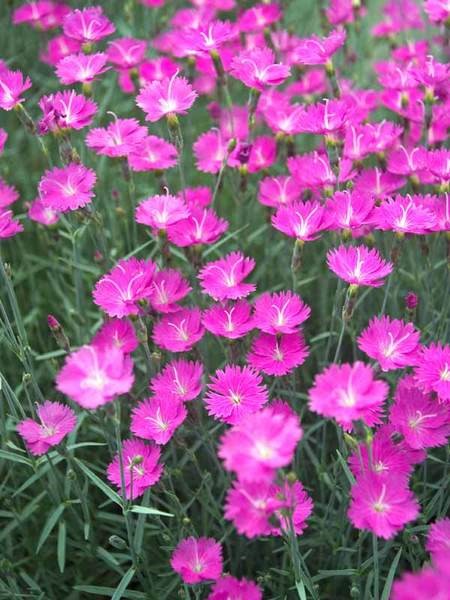
My favorite Dianthus is Cherry Vanilla
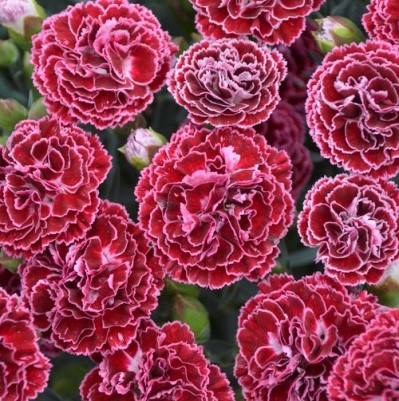
Common Name: Hens & Chicks
Latin Name: Sempervivum
Likes: Full Sun and very well drained Soil
Fun Fact: if a piece breaks off and you leave it to callous over for 48 hours and then put it in some potting soil you get an entirely new plant.
Why we recommend it: not long blooming- more like ‘randomly sends up a weird looking flower’ but it is evergreen so it provides multiple seasons of interest to the garden. It’s a great choice for a sunny hot exposed area where other things might look tired Hens & Chicks are in their element.
Watch out for Aphids! This is one of the plants that they are very good at hiding out in. also never overwater. We rarely water the Succulents
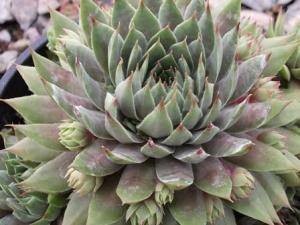
Common Name: Cranesbill, Geranium
Latin Name: Geranium
Likes: Full Sun to Partial Shade with better flowers in full sun. Likes rich but well-drained soil
Fun Fact: people sometimes think this is an annual because it’s called Geranium. Other people will think the annual Geranium is a perennial because…… sigh…Geranium. So this is one plant that as soon as they say the name we should determine if they are looking for an annual or a perennial plant.
Why we recommend it: This one is Rozanne and it’s the most popular and longest blooming Geranium. Weeks to months of flowers. Its flowers look absolutely fantastic in a rock garden.

Common Name: Black Eyed Susan
Latin Name: Rudbeckia fulgida ‘Goldsturm’
Likes: Rudbeckias grow best in full sun, but will tolerate partial shade. Regular moisture keeps them lush and vibrant, but they are moderately drought tolerant once established.
Fun Fact: not really fun but an FYI - the hairy stems can cause skin irritation so be careful when handling it.
Why we recommend it: Rudbeckias are among the best species for perennial flower borders and wildflower meadow plantings. They provide food for butterflies, bees and other pollinators in the summer and if you leave the seedheads on over the winter they provide food for birds and other wildlife. They are low maintenance and long blooming.
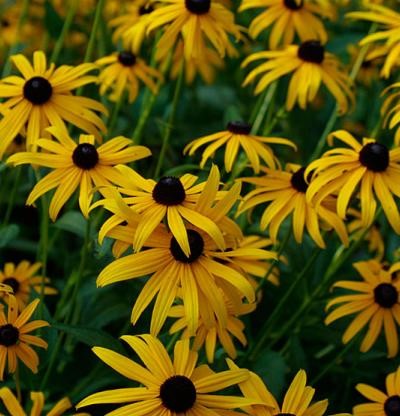
Common Name: Lupin
Latin Name: Lupinus
Likes: Full Sun in average soil
Fun Fact: Any Harry Potter Fans? Lupin is the Latin word for ‘Wolf-Like’
Why we recommend it: The colourful spikes of in Lupines are gorgeous in the early summer border. These one are a part of the gallery series and are dwarf compact flowers available in white, pink, yellow, red and deep blue. They are a long blooming but short lived perennial usually living for three years until it runs out of energy. Luckily it usually self-seeds like crazy so new young plants take its place once it’s exhausted.
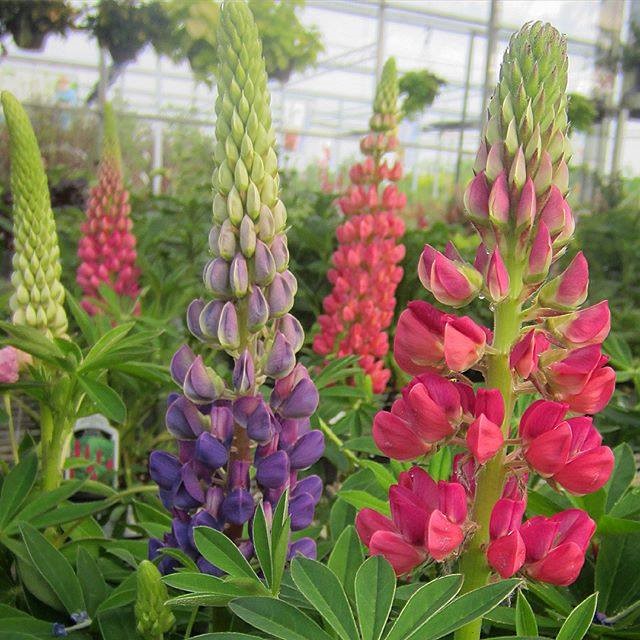
Common Name: Windflower, Japanese anemone
Latin Name: Anemone
Likes: They prefer partial shade but will tolerate sun if it doesn’t dry out. Mulching is a good idea. Average to moist soil conditions. More water is needed if it’s in afternoon sun.
Fun Fact: the name means “Daughter of the Wind”
Why we recommend it: not to be confused with spring blooming Anemones these Fall-blooming Anemones start blooming in late summer to and continue in to the fall. Available shades of white and pink they attract pollinators to the garden and provide much needed food for insects.
Watch out for: Aphids

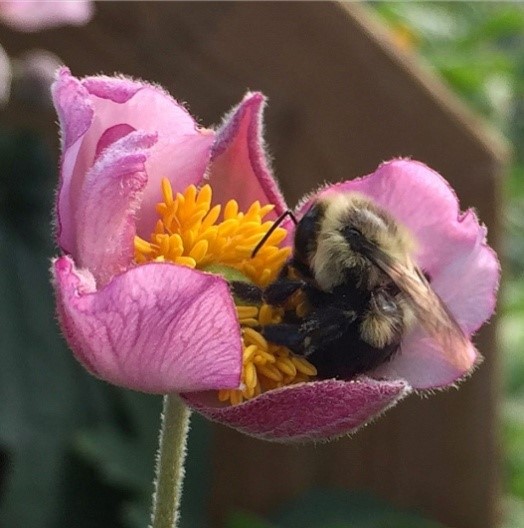
Common Name: Stonecrop, Sedum
Latin Name: Sedum
Likes: Dry, very sunny locations- very free draining will rot in wet locations
Why we recommend: Sedums are a magnet for pollinators providing them with food when a lot of plants have stopped blooming. Sedum are probably the most well-known plants for rock gardens and one of the go to’s for landscapers. It is long blooming and extremely low maintenance. Basically, you just prune the flower heads off in the spring- not in the fall! They provide great winter interest!
Watch out for: overwatering and aphids
